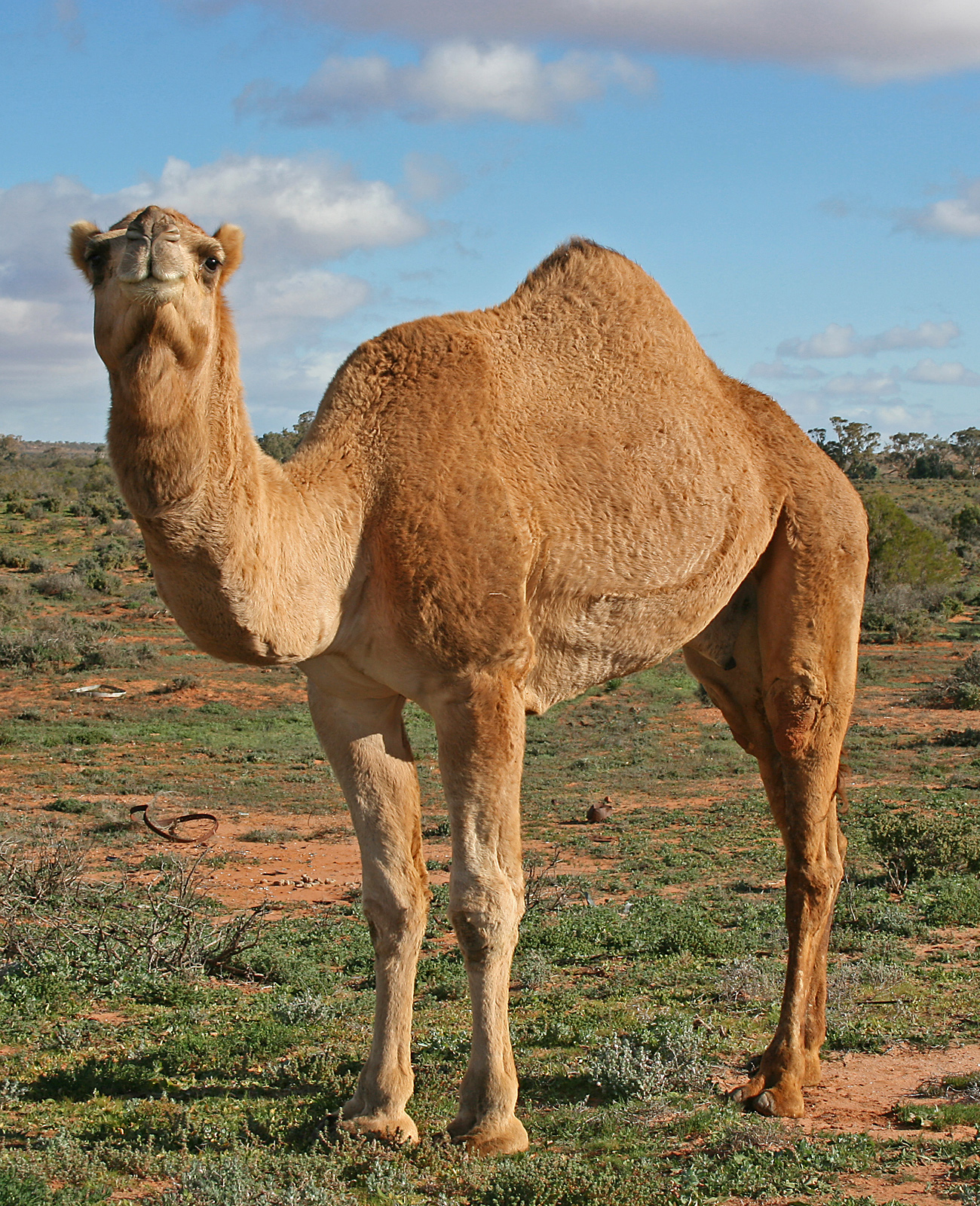

source image : WIKIPEDIA
Dromedary Camel or Arabian Camel
Classification
Kingdom : animalia
Phylum : chordata
Class : mammalia
ordo : artiodactyla
Family : camelidae
Genus : camelus
Species : camelus dromedarius
A B O U T T H E A R A B I A N C A M E L
The dromedary, also called the Arabian camel (Camelus dromedarius), is a large, even-toed ungulate with one hump on its back. The dromedary is the tallest of the three species of camel; adult males stand 1.8–2 m (5.9–6.6 ft) at the shoulder, while females are 1.7–1.9 m (5.6–6.2 ft) tall. Males typically weigh between 400 and 600 kg (880 and 1,320 lb), and females weigh between 300 and 540 kg (660 and 1,190 lb). The species' distinctive features include its long, curved neck, narrow chest, a single hump (compared with two on the Bactrian camel and wild Bactrian camel), and long hairs on the throat, shoulders and hump. The coat is generally a shade of brown. The hump, 20 cm (7.9 in) tall or more, is made of fat bound together by fibrous tissue.
The hump stores up to 80 pounds of fat, which a camel can break down into water and energy when sustenance is not available. These humps give camels their legendary ability to travel up to 100 desert miles without water. Camels rarely sweat, even in desert temperatures that reach 120°F, so when they do take in fluids they can conserve them for long periods of time. In winter, even desert plants may hold enough moisture to allow a camel to live without water for several weeks.
When camels do refill, however, they soak up water like a sponge. A very thirsty animal can drink 30 gallons of water in only 13 minutes.
The hump stores up to 80 pounds of fat, which a camel can break down into water and energy when sustenance is not available. These humps give camels their legendary ability to travel up to 100 desert miles without water. Camels rarely sweat, even in desert temperatures that reach 120°F, so when they do take in fluids they can conserve them for long periods of time. In winter, even desert plants may hold enough moisture to allow a camel to live without water for several weeks.
When camels do refill, however, they soak up water like a sponge. A very thirsty animal can drink 30 gallons of water in only 13 minutes.
Dromedaries are mainly active during daylight hours. They form herds of about 20 individuals, which are led by a dominant male. This camel feeds on foliage and desert vegetation.
D E S E R T A D A P T A T I O N S
Other adaptations help dromedaries thrive in desert conditions. Their nostrils close to keep sand at bay, and they have bushy eyebrows and two rows of long eyelashes to protect their eyes. Large, tough lips enable them to pick at dry and thorny desert vegetation. Big, thick footpads help them navigate the rough rocky terrain and shifting desert sands.
D O M E S T I C A T I O N
Arabian camels have been domesticated for approximately 3,500 years and have been long valued as pack animals. They can carry large loads for up to 25 miles a day. Some cultures judge a person's wealth based on the number of camels they own. Today, nearly all of the world's camels are domestic animals. They are found in northern Africa and southwestern Asia, and have been introduced to Australia.
source :
- https://en.wikipedia.org/wiki/Dromedary
- https://www.nationalgeographic.com/animals/mammals/a/arabian-camel
arabiancamel.ppt
Question :
1. mention the classification of camel arabic!
2.how arab camels adapt in the desert?
3. the average height of male arab camels is?
4. what are the features of his body shape?
5. what is the difference between arab camels and ordinary camels?
Question :
1. mention the classification of camel arabic!
2.how arab camels adapt in the desert?
3. the average height of male arab camels is?
4. what are the features of his body shape?
5. what is the difference between arab camels and ordinary camels?
Komentar
Posting Komentar